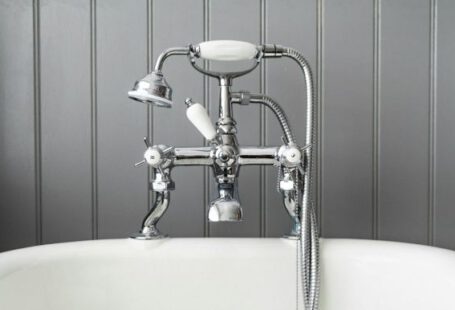Plumbing emergencies can strike at any time, leaving homeowners in a state of panic and confusion. From burst pipes to overflowing toilets, these unexpected mishaps can cause significant damage if not addressed promptly. That’s why it’s crucial to have a plan in place and know what to do when faced with a plumbing emergency. In this article, we will discuss the steps you should take to handle such situations efficiently.
Assess the Situation
The first step in dealing with a plumbing emergency is to assess the situation. Is it a minor leak or a major burst pipe? Identifying the severity of the problem will help you determine the appropriate course of action. If it’s a small leak, you may be able to temporarily stop the flow of water with a bucket or a towel. However, if it’s a more significant issue, such as a burst pipe, shutting off the main water supply should be your priority.
Locate the Shut-Off Valve
Knowing the location of the shut-off valve is crucial in mitigating damage during a plumbing emergency. This valve is typically located near the water meter or where the main water supply enters your home. Familiarize yourself with its location beforehand, so you can quickly shut off the water in case of an emergency. Turning the valve clockwise will stop the flow of water and prevent further damage.
Call a Professional
While you may be tempted to tackle the issue yourself, it’s often best to call a professional plumber during a plumbing emergency. Plumbers have the expertise, experience, and tools to handle these situations efficiently. They can quickly identify the problem, provide immediate solutions, and minimize the risk of further damage. Don’t hesitate to reach out to a reputable plumber in your area and explain the situation clearly.
Take Safety Precautions
During a plumbing emergency, it’s essential to prioritize safety. If there is standing water, be cautious and avoid contact with electrical outlets or appliances. Water and electricity are a dangerous combination that can lead to electrocution. Additionally, if you suspect a gas leak, evacuate your home immediately and call the gas company from a safe location. Safety should always be the top priority.
Document the Damage
In the midst of a plumbing emergency, it can be easy to overlook documenting the damage. However, taking photos or videos of the affected areas can be beneficial when filing an insurance claim. These visual records serve as evidence of the extent of the damage and can help expedite the claims process. Remember to capture clear images of any waterlogged furniture, walls, or flooring.
Contact Your Insurance Company
After addressing the immediate plumbing emergency, reach out to your insurance company to report the incident. They will guide you through the claims process and provide instructions on the necessary documentation. It’s important to notify them as soon as possible to ensure a smooth and timely resolution.
Conclusion: Be Prepared for the Unexpected
Plumbing emergencies can be stressful and overwhelming, but being prepared can make all the difference. By assessing the situation, locating the shut-off valve, calling a professional, taking safety precautions, documenting the damage, and contacting your insurance company, you’ll be better equipped to handle any plumbing emergency that comes your way. Remember, preparation is key when it comes to protecting your home and minimizing the impact of unexpected events.



